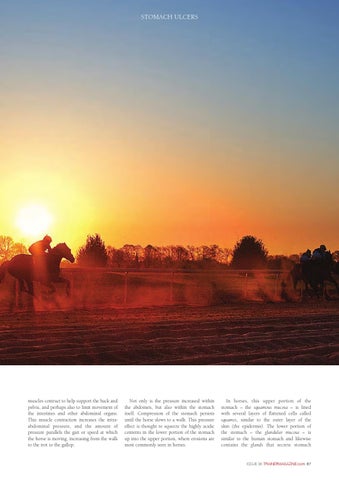GASTRIC ULCERS NEW STYLE2_Jerkins feature.qxd 23/08/2011 12:50 Page 2
STOMACH ULCERS
muscles contract to help support the back and pelvis, and perhaps also to limit movement of the intestines and other abdominal organs. This muscle contraction increases the intraabdominal pressure, and the amount of pressure parallels the gait or speed at which the horse is moving, increasing from the walk to the trot to the gallop.
Not only is the pressure increased within the abdomen, but also within the stomach itself. Compression of the stomach persists until the horse slows to a walk. This pressure effect is thought to squeeze the highly acidic contents in the lower portion of the stomach up into the upper portion, where erosions are most commonly seen in horses.
In horses, this upper portion of the stomach – the squamous mucosa – is lined with several layers of flattened cells called squames, similar to the outer layer of the skin (the epidermis). The lower portion of the stomach – the glandular mucosa – is similar to the human stomach and likewise contains the glands that secrete stomach
ISSUE 35 TRAINERMAGAZINE.com 67
